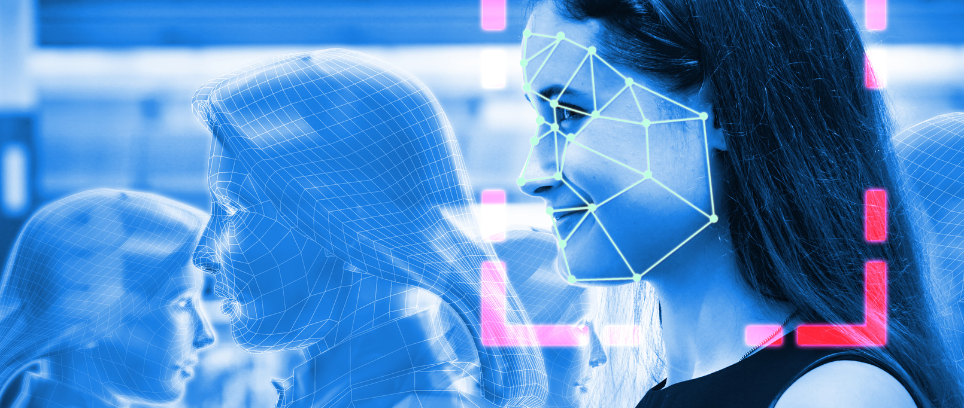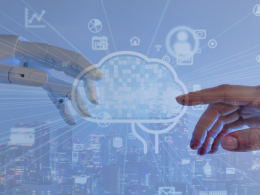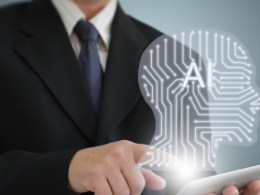Have you ever wondered if it’s possible to detect faces in real-time while also identifying whether individuals are wearing face masks?
Well, the answer is a resounding “Yes!“
Thanks to the incredible advancements in computer vision and machine learning, we now have the technology to achieve Real-Time Face Detection with Face Mask Detection using OpenCV. This groundbreaking application has far-reaching implications for various industries, from enhancing public health safety to strengthening security measures.
In this blog, we will dive deep into the fascinating world of face detection and mask recognition, exploring the inner workings of OpenCV and the incredible potential it holds.
So, fasten your seatbelts as we embark on this thrilling journey through the realm of cutting-edge technology!
Ever wondered about Real-Time Face Detection with Face Mask Detection using OpenCV?
Face detection is a computer vision technology that involves identifying and locating human faces within digital images or video streams. It is an essential building block for various applications, such as facial recognition, emotion analysis, face tracking, and face mask detection.
The process of face detection involves analyzing the image or video to detect regions that likely contain human faces and then accurately locating these faces.
Understanding Real-Time Face Detection with OpenCV
Real-time face detection with OpenCV refers to the process of detecting human faces in images or video streams in real-time using the OpenCV library. OpenCV (Open Source Computer Vision) is an open-source computer vision and machine learning software library, widely used for various image and video processing tasks.
The face detection process involves analyzing the input image or video frame and identifying the presence and locations of human faces within it. Real-time face detection is particularly useful in applications such as facial recognition, surveillance, emotion analysis, and augmented reality, among others.
OpenCV provides pre-trained models and algorithms designed for face detection, making it easier for developers to implement this functionality without the need to build everything from scratch. These models are trained on large datasets, enabling them to recognize patterns and features unique to human faces.
The process of real-time face detection with OpenCV typically involves the following steps:
1. Input Image/Video
The algorithm takes an image or video frame as input, which may come from a camera feed or a pre-recorded video.
2. Pre-processing
The input image/frame is pre-processed to enhance the quality and make it suitable for further analysis. Common pre-processing steps include resizing, grayscale conversion, and normalization.
3. Face Detection
OpenCV’s pre-trained face detection models are applied to the pre-processed image/frame to detect faces. These models use various techniques like Haar cascades, Single Shot Multibox Detector (SSD), or Multi-Task Cascaded Convolutional Networks (MTCNN) to identify facial features and patterns.
4. Post-processing
Once faces are detected, post-processing steps may be applied to refine the results and eliminate false detections. Non-maximum suppression and thresholding are commonly used techniques during this stage.
5. Visualization
The final step involves displaying the results of face detection, often by drawing bounding boxes around the detected faces on the original image or video frame.
The Importance of Face Mask Detection in Today’s World
Face mask detection plays a crucial role in ensuring public health and safety amidst the ongoing COVID-19 pandemic.
By automatically identifying individuals not wearing masks in public spaces, this technology helps enforce mask-wearing mandates, reduces the risk of virus transmission, and promotes responsible behavior, ultimately contributing to the global efforts to combat the pandemic.
How OpenCV Revolutionized Face Detection Technology
OpenCV has brought about a significant revolution in face detection technology by providing powerful and efficient tools for detecting faces in images and video streams. With its pre-trained models and algorithms, developers can easily integrate face detection functionality into their applications, saving time and effort.
OpenCV’s robustness and accuracy have paved the way for a wide range of real-world applications, from security and surveillance to facial recognition and augmented reality, making it a game-changer in the field of computer vision and face detection.
Step-by-Step Guide to Implementing Face Mask Detection with OpenCV
1. Setting up the Environment and Installing OpenCV
Begin by setting up the development environment for your face mask detection project. Install OpenCV, an open-source computer vision library, on your machine to leverage its face-detection capabilities.
2. Preparing the Disaster for Training
To train the face mask detection model, you need a dataset comprising images of people with and without masks. Collect, label, and organize these images to create a balanced and diverse dataset for effective training.
3. Building the Face Detection Model
Utilize OpenCV’s pre-trained face detection models, such as Haar cascades or deep learning-based models like Single Shot Multibox Detector (SSD) or Multi-Task Cascaded Convolutional Networks (MTCNN), to detect faces in the images. This step will form the foundation for mask detection.
4. Integrating Face Mask Detection
Develop a model or employ existing deep learning frameworks like TensorFlow or PyTorch to train a face mask detection model. Use the prepared dataset to teach the model to distinguish between masked and unmasked faces.
Overview and Applications of Face Detection
Face detection plays a crucial role in many real-world applications. Some of the key applications include:
1. Facial Recognition
Face detection is the first step in facial recognition systems, where it identifies and localizes faces before further processing for identity verification or comparison.
2. Emotion Analysis
By detecting faces in images or video frames, emotion analysis applications can identify and analyze facial expressions to infer emotions such as happiness, sadness, anger, etc.
3. Face Tracking
In video processing, face detection enables the tracking of a specific person’s face across multiple frames, allowing for applications like video surveillance and augmented reality.
4. Human-Computer Interaction
Face detection is used in various human-computer interaction scenarios, such as automatic login systems or adjusting device settings based on detected user presence.
5. Face Mask Detection
During pandemics or in high-security environments, face detection can be combined with face mask detection to ensure compliance with safety regulations.
Future Trends and Innovations in Face Detection Technology
The field of face detection technology is continuously evolving, and several exciting future trends and innovations are expected to shape its development. Some of these trends include:
1. Real-Time and Edge Computing
Future face detection systems will focus on achieving real-time performance, enabling faster and more efficient processing of large volumes of data. Edge computing will play a significant role in this, as it allows face detection to be performed directly on devices, reducing the reliance on cloud computing and enhancing privacy and security.
2. Deep Learning Advancements
Deep learning techniques, especially Convolutional Neural Networks (CNNs), will continue to drive advancements in face detection. Improvements in model architectures, transfer learning, and data augmentation will lead to more accurate and robust face detection models.
3. 3D Face Detection
Traditional 2D face detection will be complemented by 3D face detection methods, enabling a more comprehensive understanding of facial structures and expressions. This will enhance applications like facial recognition and emotion analysis.
4. Masked Face Detection
Given the increased use of face masks due to pandemics, face detection technology will adapt to detect faces even when partially covered by masks. Researchers are actively exploring methods to address this challenge.
5. Privacy and Ethical Considerations
As face detection becomes more prevalent, privacy and ethical concerns will gain prominence. Future innovations will focus on developing privacy-preserving face detection methods, ensuring data security and user consent.
6. Multimodal Approaches
Integrating multiple modalities, such as face detection with voice or gesture recognition, will lead to more sophisticated and context-aware applications, further enhancing user experiences.
7. Robustness to Varied Conditions
Future face detection systems will be designed to handle various environmental conditions, such as low-light scenarios, occlusions, and varying angles, making them more reliable and adaptable in real-world settings.
8. Edge AI Hardware
The development of specialized edge AI hardware will empower devices with enhanced computational capabilities, enabling faster and more efficient face detection without relying solely on cloud resources.
Overall, the future of face detection technology is promising, with continuous advancements and innovations anticipated to revolutionize various industries, including security, healthcare, retail, and entertainment. As technology continues to evolve, face detection will play an increasingly vital role in shaping our daily lives, offering exciting possibilities for safer, more convenient, and personalized experiences.
In conclusion, Real-Time Face Detection with Face Mask Detection using OpenCV is a powerful and valuable application of computer vision technology. By leveraging the capabilities of OpenCV and machine learning models, we can accurately and efficiently detect faces in real-time while also identifying the presence of face masks.
This technology holds immense potential in various domains, including public health, security, and retail, by promoting safety and compliance with face mask regulations. As we continue to advance in the field of computer vision, this innovative solution will undoubtedly play a crucial role in shaping a safer and more secure future.
 Pin
PinJoin ACCREDIAN’s Data Science certifications and start your journey today! With our extensive collection of data resources, pursue a fulfilling career in data science.
Let’s make your data-driven dreams a reality!
Contact us for any questions or comments.






